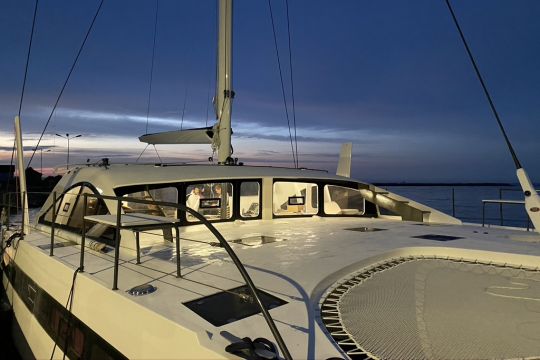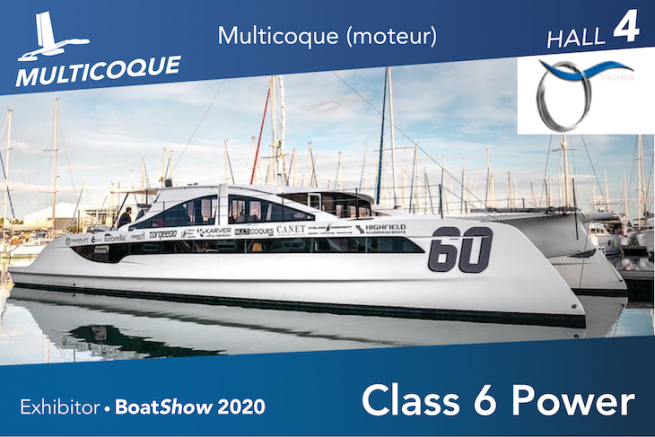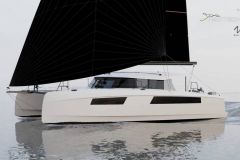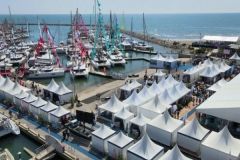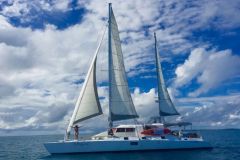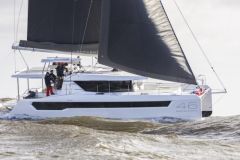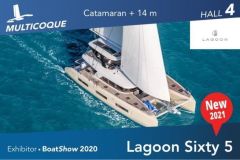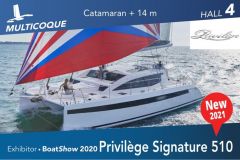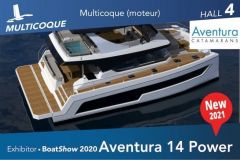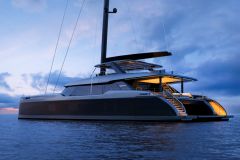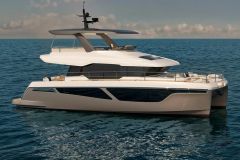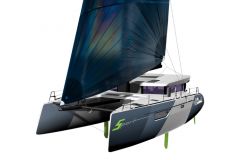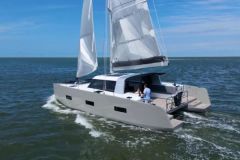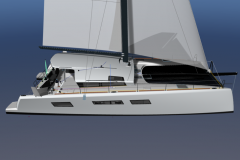Data sheet Request for information
A safe and seaworthy catamaran
The Class 6 is a catamaran 63-foot boat developed by Daniel Levy and Laurent Bourgnon via the Latvian shipyard O'Yachts. The idea was to create a seaworthy boat, easy to use by a couple, capable of resisting the assaults of the wind and the sea, and therefore very safe. All this with a concern for fuel economy.
Thus, the Class 6 is equipped with a sort of 3rd hull in the middle, a wave piercer, which allows to direct the water under the boat and to avoid the burying by bringing buoyancy to the structure. In its engine version, the Class 6 is designed to sail smoothly, with a displacement hull. Thus, the constraints are the same as on a sailboat, to obtain fluidity in the water. The engine just gives the power to move forward but is not designed to get out of the water. To gain in performance, the Class 6 floats have a huge step that goes from the front to the back, right to the bottom of the boat.
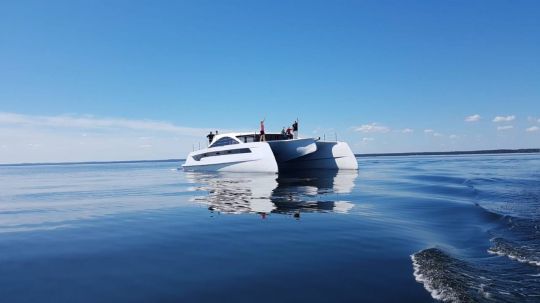
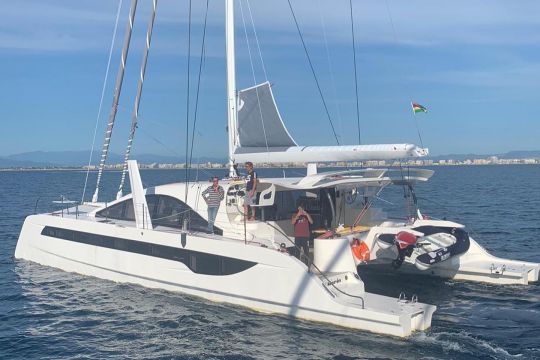
Reduced consumption
One of the other objectives on which Laurent Bourgnon has worked hard is fuel consumption, a subject that was close to his heart. Thus, in the motor catamaran version, the Class 6 Power consumes only 1 L/mile at 9 knots with an 82 HP thermal engine installed in the port hull. The boat can be fitted with up to 110 HP and its maximum speed is 13 knots, but the idea is to sail at less than 10 knots.
A small electric motor comes in addition to sail in the lagoons or for maneuvering in port.
To reduce fuel consumption, the shipyard has also focused on weight reduction with a carbon structure and special attention to the fittings by carrying out hydrostatic weighing. The hydrostatic weighing gives a verified weight of 13.8 T for the Class 6 Power.
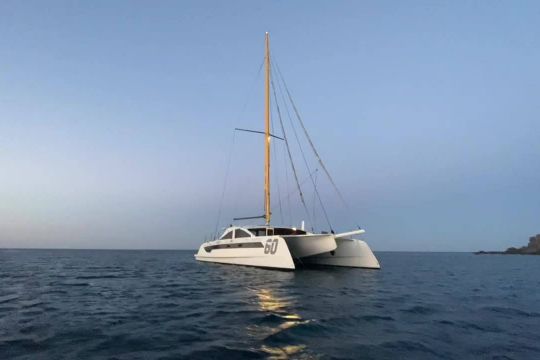
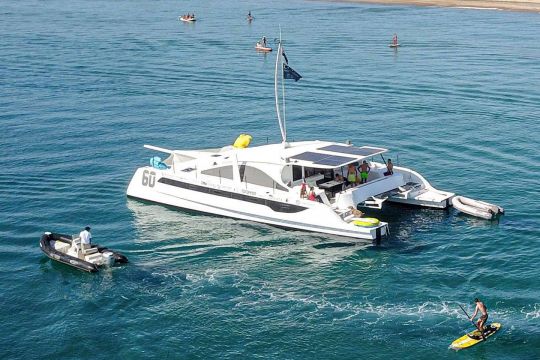
A custom living space
Inside, the living space is enormous and totally custom. Between the forward cockpit, the nacelle and the aft cockpit, there is 44 m2 of space that can be arranged according to the owner's wishes. A surface area obtained by changing the layout of the mast on the boat (for the sail version), which rests on the wave pier and not on a transverse bulkhead.
For the construction, the shipyard was inspired by the construction technique of racing boats, again thanks to the experience of Laurent Bourgnon. Thus, the Class 6 is built in double infusion, with a carbon structure - 32 layers of carbon in the wave piercing - just like the bulkheads and reinforcements. The rest is made of fiberglass.
Thanks to this weight reduction, the shipyard ensures maximum comfort for its customers by allowing them to equip their boat as they wish. The only thing that remains "fixed" is the installation of the cabins at the back of the floats. The central hull - the wave piercing - is reserved for the installation of water tanks with a capacity of 1000 L. The customer can choose to have his boat fitted out by the shipyard - which works with three subcontractors - or to call on his own designer.

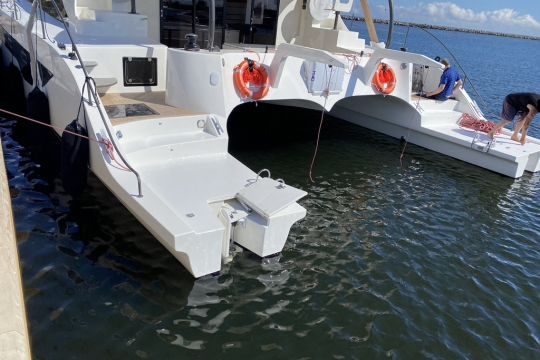
Easier sailing manoeuvres
In its sailing version, the Class 6 is easy to handle with a hydraulic system for sail management, a furling carbon boom and a self-tacking jib.
At the stern, the large skirts designed to facilitate disembarkation are immediately noticeable. Like a pontoon, the dinghy can be moored to the side. On the stern, Dan Levy has developed a lifting rudder system, for sailing in shallow areas.
In terms of pricing, the Class 6 is marketed at a final price of approximately 2 million euros.
